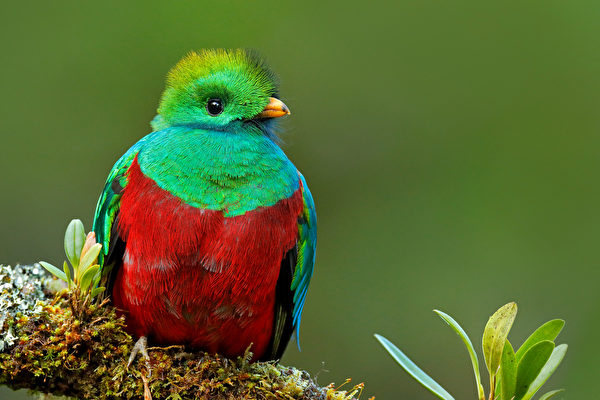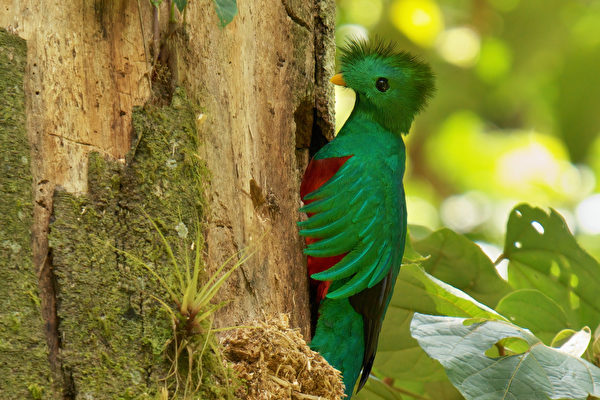The quetzal bird has a free and resilient soul. When captured, it would rather die on a hunger strike than submit to a cage made of gold. (Shutterstock)
The Quetzal is famous for being a beautiful bird, and has a free and indomitable spirit. The quetzal bird, when captured, would rather starve to death than submit to being locked in a cage, so it is considered a sacred symbol in Mayan and Aztec culture.
The Quetzal bird (Pharomachrus mocinno, scientific name: Pharomachrus mocinno) is a rare and beautiful bird in the world, about the size of a pigeon; red belly and green back, light brown head and chest, sparkling feathers. The two colors red and green create beautiful colors for this bird’s entire body.

Because this bird loves freedom, it cannot be kept in a cage, otherwise the bird will starve to death, so people call the quetzal bird a free bird, with a noble temperament.
The quetzal belongs to the family Trogonidae and lives in mountain cloud forests from southern Mexico to western Panama. They are omnivorous birds and can eat almost anything, including fruits, berries, insects, lizards, frogs, and any other small animals they can catch.
As one of the most beautiful birds in the world, when mating season comes, in addition to the green velvet feathers on top of the head, the male quetzal will also grow tail feathers up to nearly 1 meter long.

To impress the female bird, the male bird often flies down from a high tree, revealing the plumage on his back to show his majesty. In addition, the male bird also sings for the female bird to hear.
This bird’s tail feathers have cultural significance. In the ancient Mayan and Aztec civilizations, only kings and high priests wore the long tail feathers of this noble emerald bird. In many Mesoamerican languages, the word “quetzal” also means noble, sacred, and tough.

Unfortunately, deforestation and poaching by animal collectors and feather collectors have reduced the habitat and led to the decline of this bird population.
Luckily, their habitat has been protected in reserves such as El Jaguar in Nicaragua and Los Quetzales National Park in Costa Rica.






